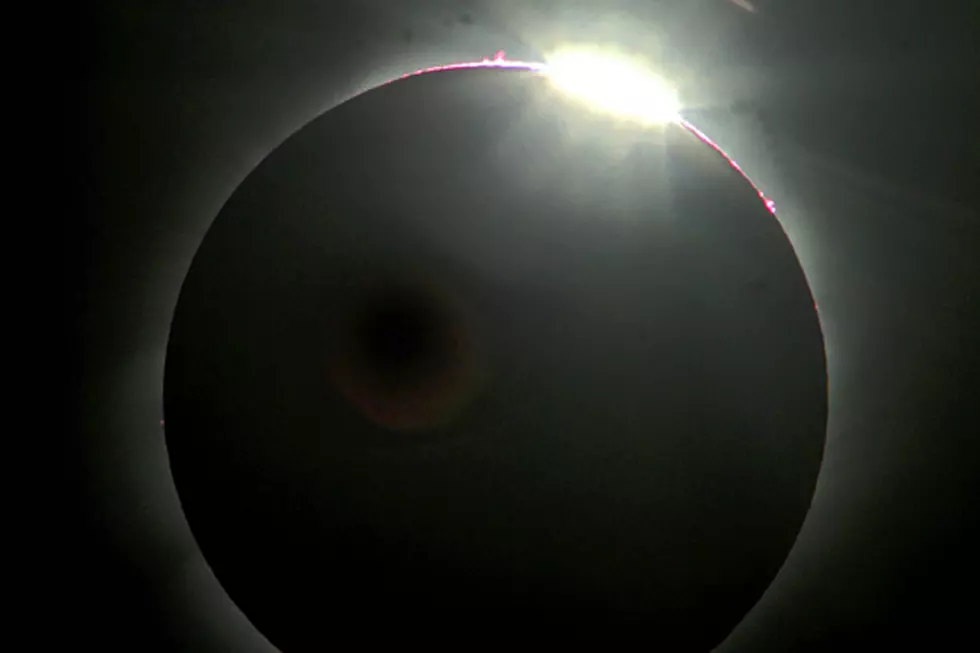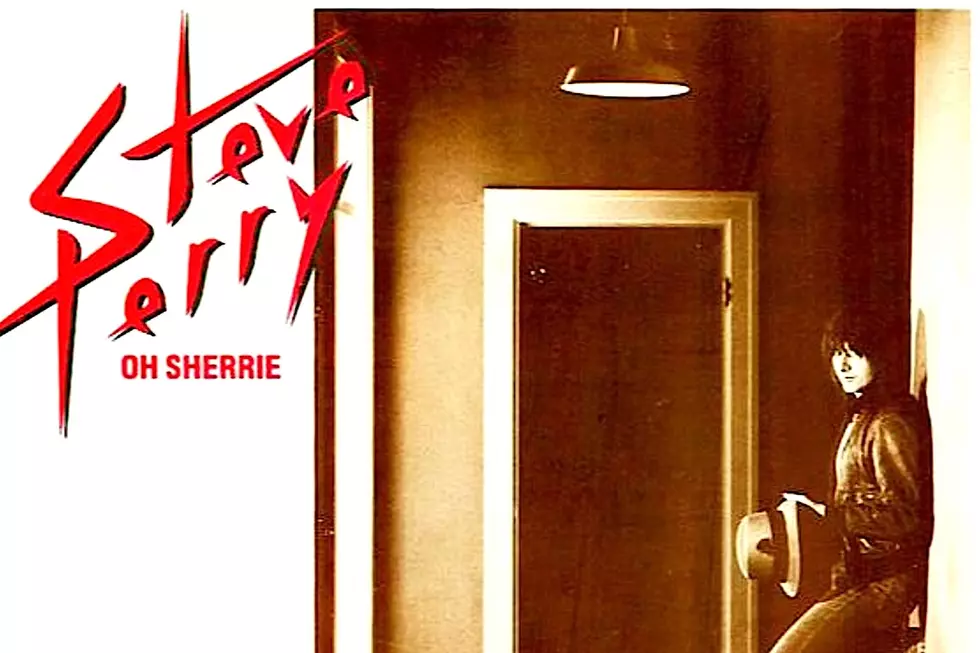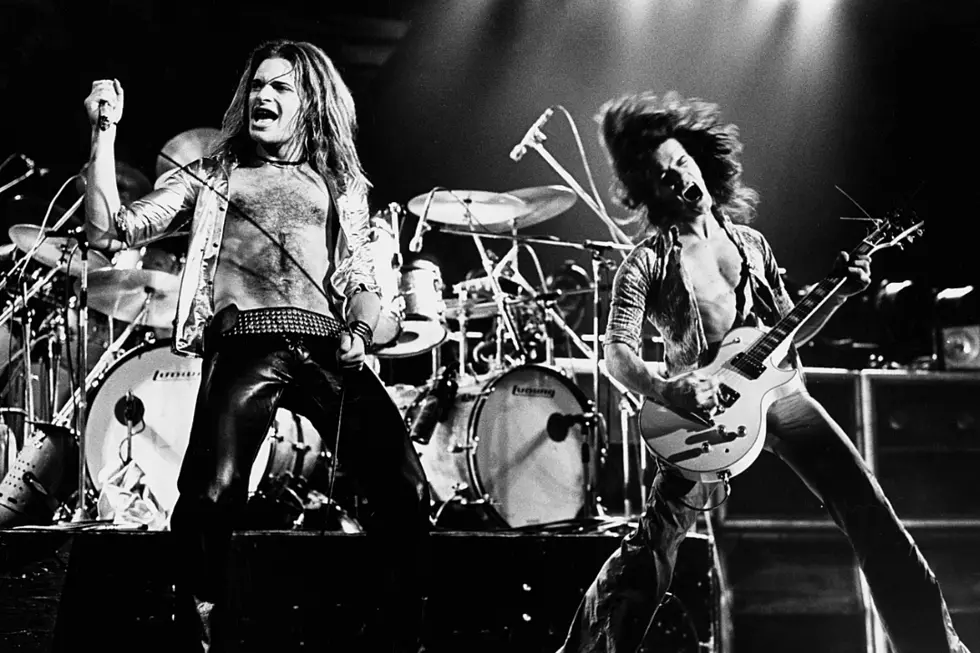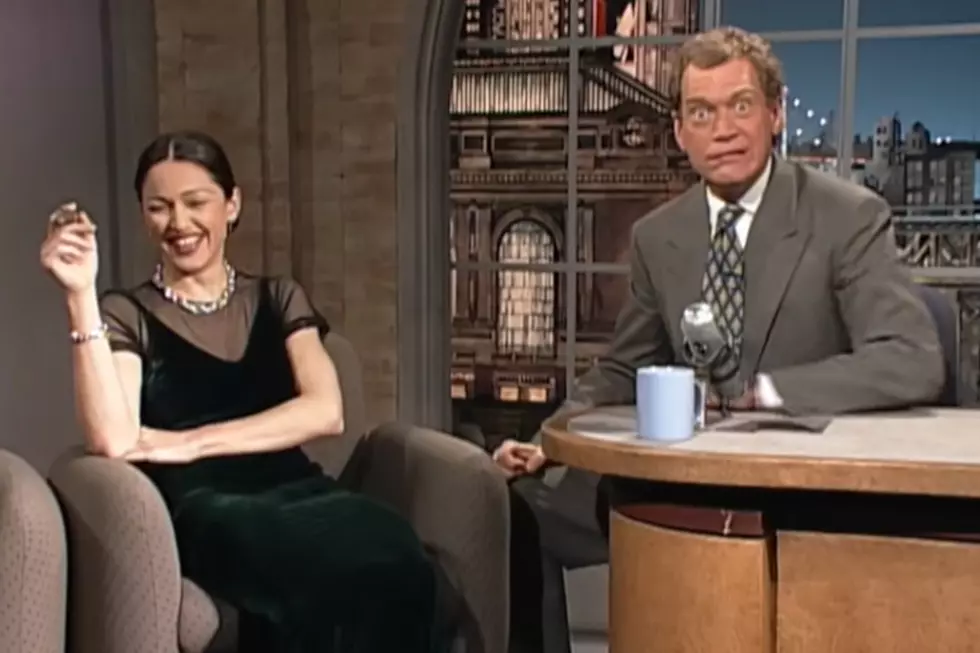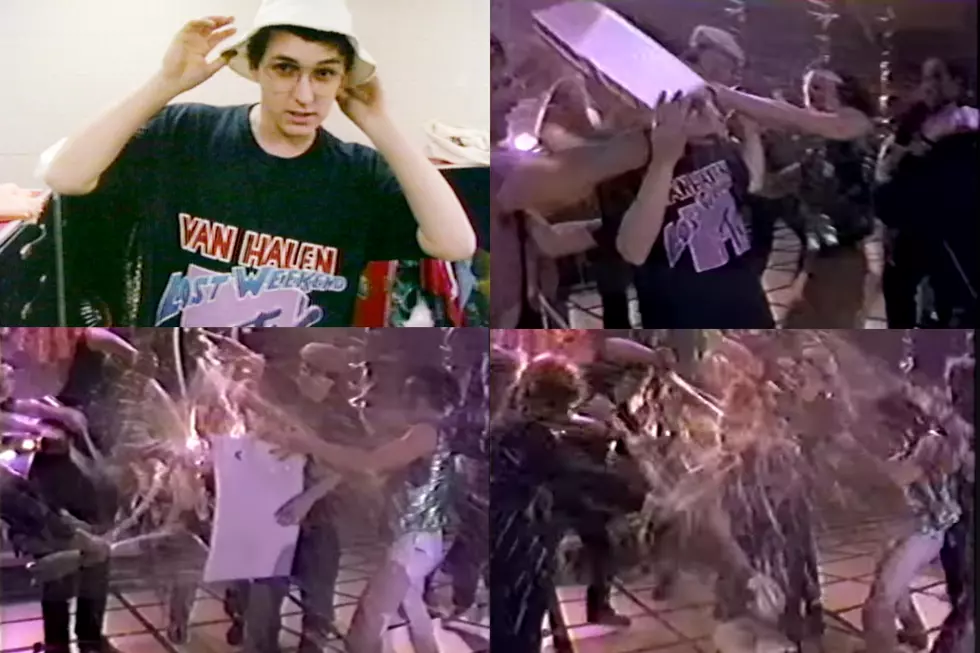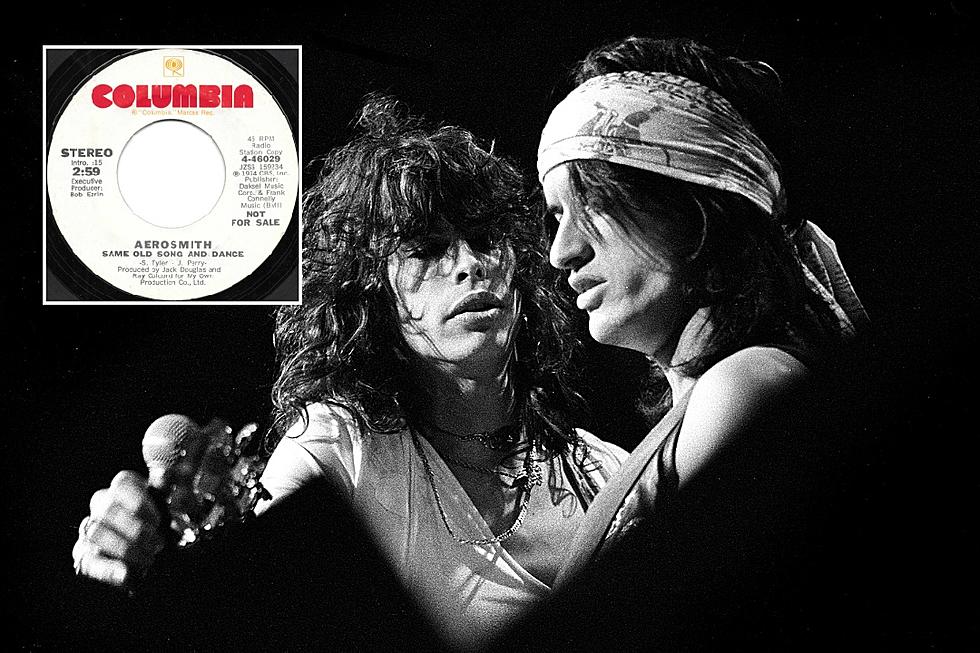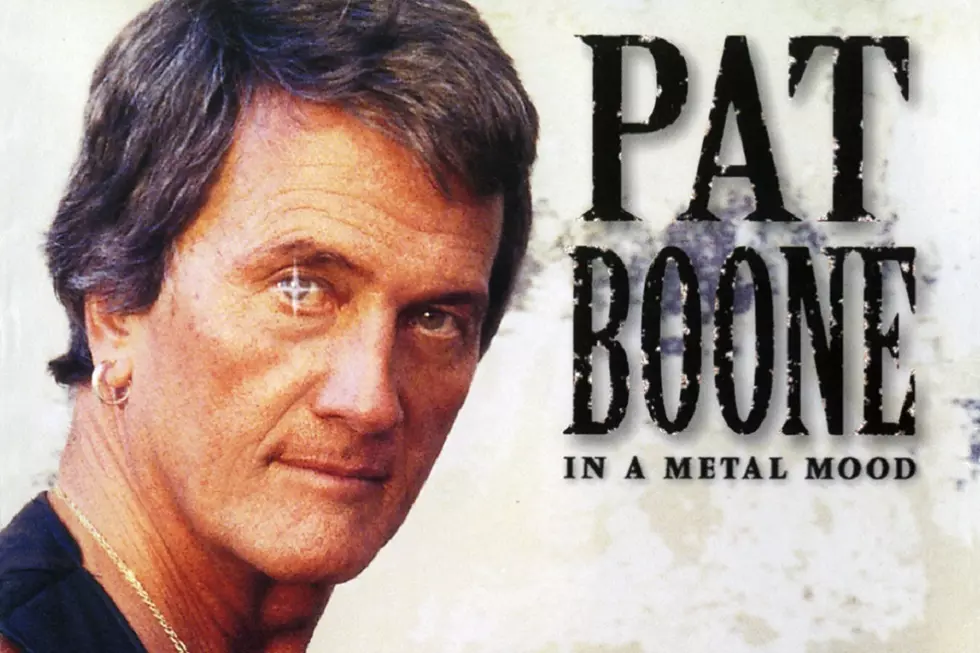
Why Pat Boone Shocked Everyone With ‘In a Metal Mood’
The thing was, Pat Boone was serious. Not about trading his Mr. Rogers sweater for a leather vest. Not about ditching gospel music to become a full-fledged metal singer. But he wasn’t being ironic when he recorded a batch of rock and metal songs for 1997’s In a Metal Mood: No More Mr. Nice Guy. He said he actually liked the music, just as he had genuinely enjoyed R&B records 40 years earlier.
Boone first became famous in the ’50s for his white-bread versions of hits by Little Richard and Fats Domino, merging his crooning style with then-contemporary hits. Although rock ’n’ roll and R&B devotees decried this as cultural appropriation, Boone’s stilted versions nevertheless became popular because they were allowed into many homes that weren’t progressive enough to welcome “race records” by black musicians.
“We’d clean up the lyrics – I know I did – but the kids didn't care so much about the lyrics, they just wanted the fun of the music,” Boone recalled in 1995. The singer, TV and movie star claimed he moved on from pop music in the ’60s because of the increase of songs about drugs and sex. His move to gospel music was certainly aided by his sharp decline in popularity with the rise of the British Invasion.
As a conservative Christian singer, Boone found a home in religious genres, as well as country music, in the ’60s through the ’90s. Although he maintained a media profile as a television personality and product pitchman, Boone’s music was mostly known to fans of Christian music and not massively popular. That was about to change.
Boone claims the idea to do an album of metal material came out of a joke between him and members of his backing band. While on tour, they got to talking about what sort of album Boone could do next, and it became a running gag that he’d be doing a heavy metal record.
“My conductor one day said, ‘You know, we've been laughing about that idea, but there really are some great songs that only metal-heads know. And if we went in and did them a different way, we could introduce them to a whole new audience. They are good songs,’” Boone told the A.V. Club in 2002. “So, I said, ‘Like, what and how? Do them how?’ He said, ‘For instance, if we did big-band jazz arrangements of ... ’ And then he rattled off the names of songs I really wasn’t familiar with.”
The conductor, Dave Siebels, made Boone a mixtape of hard rock and metal classics by Van Halen, Jimi Hendrix and Deep Purple, and the 60-something singer was surprised at how much he liked it. Not only that, he claimed he began to seek out more metal on his own.
Watch Pat Boone Perform 'Smoke on the Water'
“I realized that there was a whole lot of music that I had written off because it was different from things I had come to appreciate – and particularly metal, because it was noisy and angry-sounding and distorted, and guys were shouting lyrics I didn't understand,” Boone confessed. “But I got the music, and then I began to go into stores buying albums, and I’d go through the metal bins and start finding things by Motörhead and Poison. And, of course, Alice Cooper and Metallica and Megadeth, all these groups.”
As for recording these songs himself, Boone had a rule: he wouldn’t sing any songs with lyrics or a theme that he felt would betray his Christian ideology. And, as his conductor originally suggested, he wouldn’t sing the material in its original style, but in retooled, big-band renditions that sat firmly in Boone’s wheelhouse.
So, the likes of “Enter Sandman” and “Paradise City” became swing tunes. “Smoke on the Water” began with its famous riff, but then morphed into a horn-driven bossa nova, albeit one featuring ex-Deep Purple member Ritchie Blackmore on the guitar solo. Boone invited many of the original musicians to play on the songs, but only a few of them took him up on it. One of them was Ronnie James Dio, who sang backup on “Holy Diver.”
“I never thought I’d have the chance to meet Pat Boone,” Dio told the Arizona Daily Wildcat in 1997. “I mean, he’s Pat Boone – that guy's a legend. I mean, he was like Elvis when Elvis was Elvis. So, just to get the chance to meet him. And then when I did ... what a cool guy he is. … He really, really loves metal music. He loves it. He’s genuine about it ... he says, ‘Man, I missed these songs all my life. They’re so deep and great – I just love ’em’.”
After the sessions ended, In a Metal Mood was slated for release in January 1997, around the same time of the American Music Awards telecast, produced by Dick Clark. Aware of Boone’s new release, Clark got the idea of pairing the squeaky-clean singer with Alice Cooper (one of the artists he covered on the album) to present a hard rock/metal award. To promote the album, Boone not only agreed to appear but donned a leather vest, a dog collar and temporary tattoos as a joke – at Clark’s suggestion. He had no idea about the reaction his wardrobe change would receive.
“The image, I guess, was just too big of a shock, and reverberations went everywhere,” Boone said in 2002. “It was not only a big item on TV news, but it was in all the papers the next day. There were big color pictures on the front of newspapers of me in a heavy-metal outfit. People saw me in that outfit, and they didn't know the background; they just thought Pat Boone had flipped out.”
While many rock, metal and pop fans (at least the ones who were still aware of Boone) thought that the stunt was strange or amusing, the hard-core Christian set was frightened and upset by the appearance. Although Boone had sent letters to Pat Robertson and Jerry Falwell to notify them of the album and his approach to the material, no one expected such an angry uproar among their followers.
“So we did have a lot of aftermath that we didn’t anticipate, because I didn’t know that anybody was going to take it that seriously,” Boone remembered. “I was kidding about the idea, but I was very serious about the music that we had created. We got over the misunderstanding in the Christian community.”
Watch Pat Boone at the 1997 American Music Awards
Even though that last sentence is true, it’s also an understatement. Following the AMA spot and the release of In a Metal Mood, many conservative Christians and fans of Boone’s gospel music worked to get his Trinity Broadcasting Network program, Gospel America, canceled on the religious television channel. The viewers were successful, for a time, and prompted the singer to appear on TBN’s flagship program, Praise the Lord, in hopes of an apology.
When Boone showed up on the series in April, he apologized for the shock, if not the decision. He did relieve many of his fans by letting them know the costume had been a joke and that he wasn’t shirking his faith to become a devil-worshipping metal singer. Others were less convinced. A writer for the Christian Foundation magazine was upset at Boone’s discussion of any metal songs as quality music: “Good songs? Any believer with even a small amount of spiritual discernment would identify them as evil and filthy!”
In an interview with the Los Angeles Times around the same time, Boone said that Christians need to “lighten up. We’ve got to do some stretching. If we have to apologize for making a joke, then we’re in big trouble.”
Boone played snippets of the album on TBN, likely the only occasion when “Enter Sandman” and “Smoke on the Water” were played on the network. He then appeared on the 1997 Easter Seals telethon to perform his big-band version of “No More Mr. Nice Guy.” The singer’s gospel program was reinstated and the backlash seemed to be over.
Amid the controversy, In a Metal Mood was a boon for Boone. As his most successful album in decades, it notched Boone’s first Billboard chart entry in at least 35 years, rising to No. 125, and made the singer a media sensation – at least temporarily. It also launched the trend of artists doing jazzy versions of hard rock songs.
Later that year, Steve Lawrence and Eydie Gorme released a lounge-y rendition of “Black Hole Sun,” and a few years later, Paul Anka put out the Rock Swings album with covers of tunes by Van Halen, Bon Jovi and Nirvana. Plus, when Ozzy Osbourne’s MTV reality show The Osbournes premiered in 2002, its opening theme was a jazz version of “Crazy Train,” a ringer for Boone’s Metal Mood cover.
In the years since the album’s release, Boone hasn’t found himself in a metal mood again, although he did make an R&B duets album in 2006 along similar lines.
Top 50 Classic Heavy Metal Albums
Think You Know Ozzy Osbourne?
More From Ultimate Classic Rock

